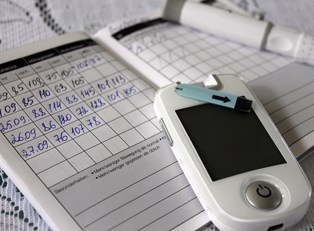Diabetes insipidus, a rare condition that may cause dehydration and other harmful complications, is treatable and rarely life-threatening. Overall, treatment of diabetes insipidus is focused on correcting underlying causes and preventing dehydration or other complications, such as electrolyte imbalance or organ damage.
Most forms of diabetes insipidus involve a shortage of anti-diuretic hormone (ADH), an important hormone that is produced and stored in the brain. ADH, also called vasopressin, is vital to your body’s fluid regulation. It tells your kidneys to hold back water that your body needs rather than dumping it into your urine.
Living with diabetes insipidus requires careful planning. There are four main types of diabetes insipidus, each with varying symptoms and treatments. In most cases, treatment for diabetes insipidus is focused on improving hydration levels by increasing the amount of ADH available in some way. To prevent crisis situations, it is recommended that you always carry your medication and water with you.
Central Diabetes Insipidus
Central diabetes insipidus is often caused by damage to the hypothalamus or the pituitary gland, areas within the brain that produce and store ADH. Many times these areas suffer injury from surgical trauma, tumors, or inflammation that may be caused by head trauma or an infection, such as meningitis. Whatever the cause, this form of diabetes insipidus results in an insufficient supply of ADH. Without it, your kidneys may not retain enough water to adequately hydrate your body, no matter how much water you consume.
Central diabetes insipidus is treated by surgery when cases involve tumors. More commonly, low ADH levels are supplemented with desmopressin, a synthetic hormone. Your fluid levels fluctuate daily, so desmopressin should only be taken as needed. It is important to always have your medication with you so that you are prepared for a crisis that may result in dehydration. Desmopressin may be taken as a pill, a nasal spray, or an injection.
Nephrogenic Diabetes Insipidus
Nephrogenic diabetes insipidus is treated by reducing the amount of urine your body produces. Often, kidney disfunction is the cause of excessive urination due to the kidneys’ inadequate response to ADH. Many times the kidney disfunction is due to a genetic kidney disorder. In these cases, your doctor may prescribe eating a low-sodium diet, and increasing your fluid intake to match your urine output can help.
Nephrogenic diabetes can also be caused by taking certain medications, such as lithium or some tetracyclines. In this case, your doctor may suggest discontinuing their use.
Gestational Diabetes Insipidus
Gestational diabetes insipidus occurs when the placenta, the source of fetal blood supply, produces an enzyme that destroys ADH in maternal blood. As the ADH is filtered through the placenta, it is attacked, causing a shortage in the maternal bloodstream. Desmopressin is given to increase the below-normal ADH levels. Gestational diabetes insipidus is a temporary condition that resolves after pregnancy.
Primary Polydipsia
Primary polydipsia is not due to low levels of vasopressin. Rather, it may be caused by a thirst mechanism malfunction in the brain. With this type, you may feel overly thirsty no matter how much fluid you consume. This form of diabetes insipidus is not caused by a shortage of ADH and the excessive urination; in this case, is just due to the high volume of fluid intake. Primary polydipsia is the only type of diabetes insipidus that does not result in dehydration.
Treatment of primary polydipsia is a matter of encouraging patients to reduce their amount of fluid consumption. Sometimes mental illness can cause patients to feel insatiably thirsty. Treating the underlying mental disorder would be the goal of treatment in those cases.



